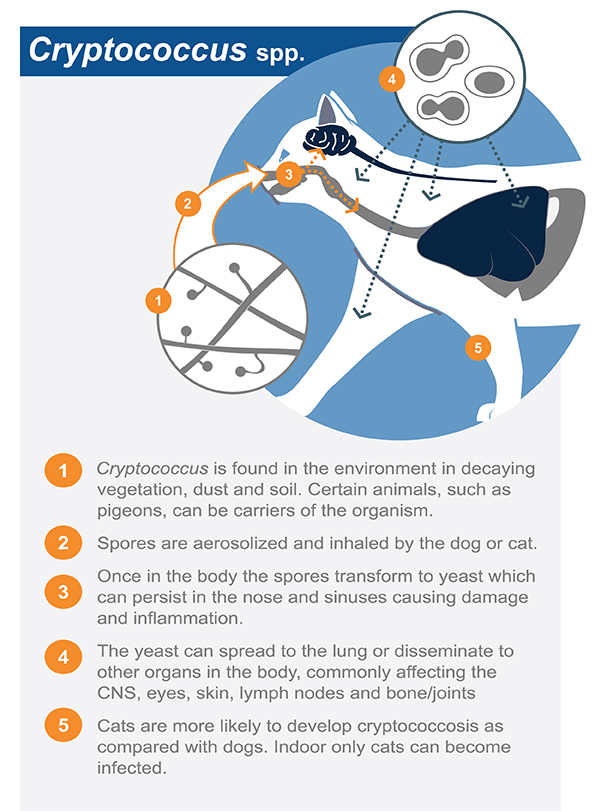Cryptococcus
Clinical Signs of Cryptococcosis
Clinical signs of cryptococcosis often include the nasal cavity, sinuses, and surrounding tissues in cats. Cryptococcus also has a predilection for the CNS. Disseminated disease can cause vague clinical signs that mimic other more common inflammatory diseases.
- Anorexia
- Weight loss
- Fever, unresponsive to antibiotics
- Nasal discharge
- Sneezing
- Nasal swelling
- Periorbital swelling
- Ocular discharge
- Blindness
- CNS signs
- Ulcerated or draining skin lesions
Treatment And Testing
Early diagnosis and appropriate treatment are critical for improved treatment outcomes. The single most accurate diagnostic test is the Cryptococcus antigen test by latex agglutination. Other non-invasive diagnostic tests might be useful, especially for treatment monitoring.
What is Cryptococcosis?
Cats are more often infected as compared with dogs and even cats that never leave the house are at risk. The fungus is found around the world in tree hollows, areas with decaying wood or bird droppings, and in soil, so no area is endemic. Cryptococcus is widespread in the soil (where it grows naturally) or is deposited through bird droppings (particularly pigeons). Horses, cattle, sheep and goats may also develop cryptococcosis.

Learn more about Cryptococcosis
It is difficult to prevent exposure to Cryptococcus since it is commonly found in the environment. Avoidance and environmental control of bird droppings (especially pigeons, such as in barn settings) might help prevent outdoor exposure.
